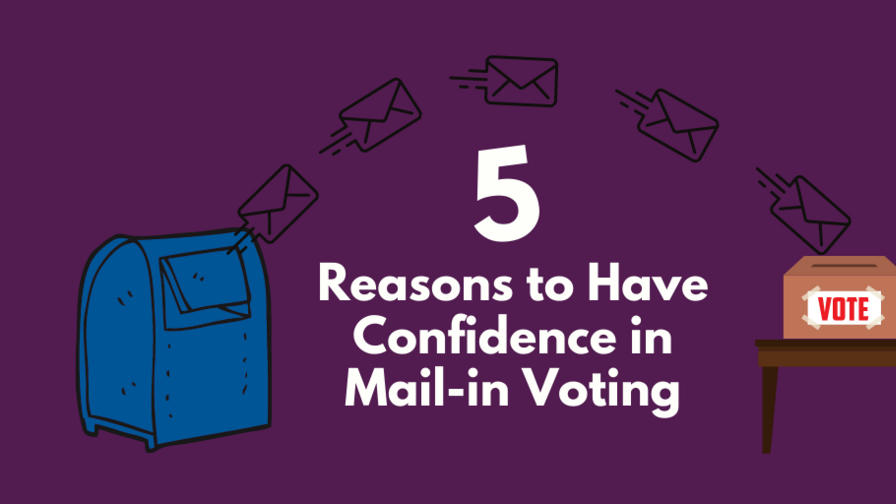5 Reasons to Have Confidence in Mail-in Voting
This guest post was contributed by Amber Stenger, co-president of the League of Women Voters of Johnson County, Kansas.
Voters can trust in the safety and security of the mail-in voting process, regardless of recent politicized claims to the contrary. Since 2000, more than 250 million votes have been cast via mailed-out ballots in all 50 states, according to the National Vote at Home Institute.
Here are five reasons you can vote by mail with confidence.
1. Voting by mail isn’t new.Absentee voting dates to the Civil War, when several states granted members of the military the opportunity to vote when they were “absent” from their home districts. Now, every state has some type of vote-by-mail process. In five states—Oregon, Washington, Hawaii, Utah, and Colorado—mail balloting is the primary method of voting. In 2018, a quarter of the electorate voted by mail.
Source: U.S. Election Assistance Commission.
2. It’s difficult to request a mail-in ballot or cast a vote by mail using someone else’s name.It’s a misconception that because there’s no way of knowing who’s requesting or voting a ballot, it would be easy to apply for or vote a ballot by mail in someone else’s name. Every step of the vote-by-mail process includes security procedures to ensure the voter requesting the ballot is the voter receiving and voting the ballot.
The most common way to verify that mail ballots are coming from the intended voter is through signature verification. Voters must sign an affidavit on the ballot envelope. When the ballot is returned to the election office, election officials examine and verify every signature, comparing it with voter registration records or other documents that contain the voter’s signature.
Some states require copies of identification documents or that their envelopes are signed before witnesses or are notarized.
Source: National Conference of State Legislatures
3. Nationwide security procedures protect the delivery of mail-in ballots.Mailed ballots typically are delivered to and picked up from the post office by two election office staff and transported in a secure container. These ballots are also processed by teams of trained election staff to ensure the integrity of the counting process.
Source: U.S. Election Assistance Commission
4. Vote-by-mail programs do not favor one political party over another.Researchers have conducted many studies to determine whether a partisan bias results from election reforms designed to make it easier to vote, of which vote-by-mail is one. A recent study by the Stanford Institute for Economic Policy Research found that “(1) vote-by-mail does not appear to affect either party’s share of turnout; (2) vote-by-mail does not appear to increase either party’s vote share; and (3) vote-by-mail modestly increases overall average turnout rates, in line with previous estimates.”
The researchers say their findings essentially dispel concerns that mail-in voting would cause a major electoral shift toward one party.
Source: Stanford Institute for Economic Policy Research
5. Voter impersonation and ballot falsification are exceedingly rare.Based on a meticulous review of elections that were investigated for voter fraud, the Brennan Center for Justice found minuscule incident rates of ineligible individuals casting ballots at the polls – no more than 0.0025 percent. Numerous reports have confirmed this finding that voter impersonation is exceedingly rare. Research shows that voter fraud is similarly rare with mail ballots.
Source: Brennan Center for Justice
Sign Up For Email
Keep up with the League. Receive emails to your inbox!
Donate to support our work
to empower voters and defend democracy.





